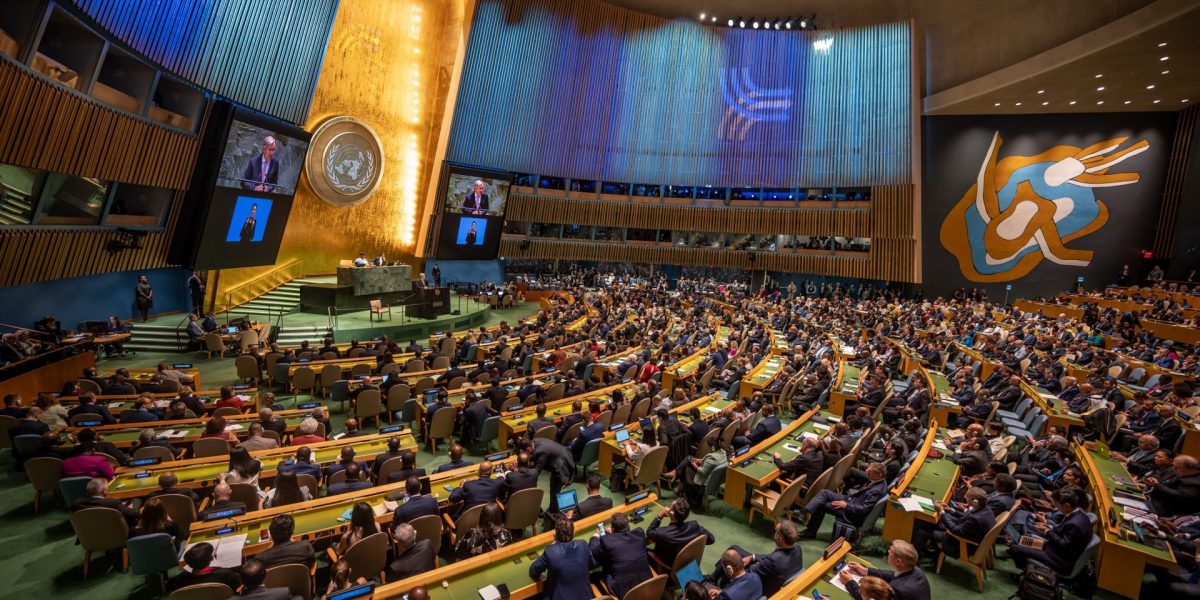The adoption of the Pact of the Future at the UN Summit of the Future in September marks a significant historical moment of note, approximately 80 years since the establishment of the UN, and 80 years before the start of the 22nd century. It takes stock of the world today and lays the groundwork for better global futures.
The Pact is meant to rebuild trust in global and multilateral institutions, to revitalise cooperation and coordination in response to shared complex issues and create better futures preparedness, particularly in readiness for emerging threats that could existentially compromise our international human community and planetary home.
The adoption of the Pact by UN member states and world leaders signals commitment to a common agenda for urgent action and a renewed consensus on multilateral global governance, emphasising stronger partnerships between states, civil society, the private sector and different levels of government from the local to the national and regional.
However, the Pact is non-binding and states are not legally obligated to meet any of the 56 actions, nor are there any comprehensive implementation and enforcement measures to assure follow-through. The 56 actions of the Pact address areas from sustainable development and climate action to international peace and security, global financial architecture reform, trade, economic growth and sovereign debt, as well as science, technology and innovation, and youth and future generations.
The document is ambitious in its calls to address crosscutting global challenges with a focus on developing countries, including accelerating financing and implementation of the UN Sustainable Development Goals (UNSDGs). Other ambitious commitments focus on limiting temperature increases to 1.5°C above pre-industrial levels and achieving net zero carbon emissions by 2050; reforming the UN Security Council to ensure better representation of African, Asia-Pacific and Latin American nations on this body, towards a more equitable global security framework and global nuclear disarmament to reduce risks of annihilative worldwide war. Sustainable space exploration and an internationally well-governed space sector are also highlighted.
A Global Digital Compact and Declaration on Future Generations are key components of the Pact. The Digital Compact focuses on issues of digital technology governance from achieving universal connectivity and access by 2030 and ending digital divides to responsible and ethical management of data, AI capabilities and technologically advanced autonomous lethal weapons of war. The Declaration on Future Generations focuses on issues of intergenerational fairness, including accountability to the unborn. It advocates for better inclusion of children and youth issues and voices in decision-making, policies and strategy implementation initiatives across all levels and sectors.
Widespread skepticism remains about the utility of the Pact. For instance, regarding climate change mitigation measures, environmental scientists and policymakers are increasingly dubious targets can be reached in 2030, 2050 or in immediately following years. Data shows deteriorating environmental conditions and breached planetary boundaries. Current actions are insignificant and inappropriate to prevent devastation from natural disasters, stop the spread of mass species extinction and protect against biodiversity loss. Further, in terms of tangibly improving the lives of the world’s most vulnerable populations most exposed to development gaps, the UNSDGs are substantially off target, with only 17% of targets on track as of 2024. Key issues such as gender equity and eradication of poverty, among others, are unlikely to be achieved for several generations without more substantive efforts.
Additionally, tensions between calls for global solidarity and national interests remain with deep divisions between communities in conflict or locked into zero-sum power and competition dynamics. A few UN member states such as Russia have criticised elements of the Pact and already indicated disassociation from the global consensus. The deepening humanitarian crisis in Sudan and Congo, ongoing conflict between Russia and Ukraine and the expanding state of war in the Middle East, alongside other issues are stark signals that there are significant obstacles to surmount in unifying the global community and bridging contemporary realities to ideal visions and long-term aspirations.
The UN Secretary-General has acknowledged the shortcomings and challenges in implementing the Pact and ensuring commitments have relevance beyond their documentation in concrete and positively impactful actions linked to relevant progress indicators.
In particular, issues of economic and financial interests and contentions around legislative regulations are at play, especially regarding technological and scientific advancements and a just transition from fossil fuel-based industries to green economies and societies, as well as in relation to requirements for global financial architecture reform and international peace, security, health and wellbeing.
It is clear that to realise the Pact, profound systemic global transformation is needed. Historical injustices must be redressed, new threats addressed and innovative reform institutionalised. There are also important questions to consider about futures of democracy and trajectories of authoritarian and populist leadership trends as key drivers of change.
Yet, the Pact for the Future has boldly attempted to hit a reset button, making a clarion call to build better futures leaving none behind. Despite challenges there are gains to celebrate. The Pact importantly provides an avenue for continued dialogue and negotiations necessary to overcome political polarisation, limitations and numerous stakeholder impasses. It is a meaningful step and opportunity to catalyse achievement of shared ideals stated as equitable prosperity, a healthy planet and peaceful societies based on universal rights and global cooperation and partnerships.
Indeed, to translate these ideals into actions necessitates innovative, opportunity-responsive and shock-adaptive, resilient systems; representative, context-relevant, values and principles-based institutions worldwide, and functional operational mechanisms underpinned by cycles of review and refinement.
The agenda outlined by the Pact is complex and a long-term responsibility for current and future generations. While outcomes are uncertain and global futures unpredictable, the Pact is a reminder that we can exercise our human agency to strive towards collective and planetary long-term best interests.








